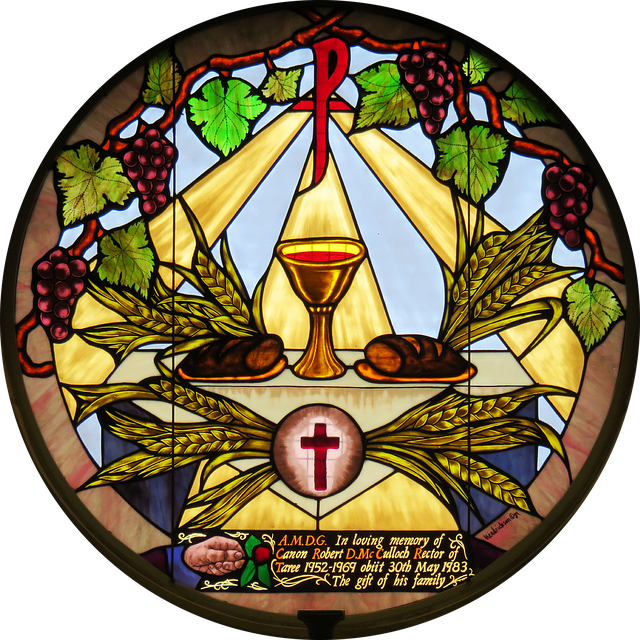The Eucharist Miracle of Bolsena
The Eucharist Miracle of Bolsena, which occurred in 1263 in Bolsena, Italy, is one of the most well-known Eucharistic miracles in the Catholic Church. The story revolves around a priest who had doubts about the reality of the Eucharist and saw blood droplets appear on the host during the celebration of Mass.
According to the story, the priest was celebrating Mass in the town of Bolsena when, as he was consecrating the host, he began to doubt the reality of the Eucharist. He was so overcome with doubt that he saw blood droplets appear on the host. The blood dripped onto the altar cloth and stained it, forming a large red cross.
The event was considered a miracle and led to the construction of the Basilica of Santa Cristina in Bolsena, where the altar cloth, known as the Corporal of Bolsena, is still preserved to this day. The Corporal of Bolsena is considered one of the most important relics in the Catholic Church, and it is a powerful testimony to the Catholic belief in the real presence of Christ in the Eucharist.
Pope Urban IV was so moved by the miracle that he instituted the feast of Corpus Christi to commemorate it. The feast of Corpus Christi is still celebrated today by the Catholic Church as a day of thanksgiving for the gift of the Eucharist and as a time to reflect on the real presence of Christ in the Eucharist.
Miracle of Lanciano
One of the most well-known Eucharistic miracles in the Catholic Church is the Miracle of Lanciano, which is said to have occurred in the 8th century in Lanciano, Italy. According to the story, a priest who had lost his faith in the real presence of Christ in the Eucharist saw the bread and wine he was consecrating turn into flesh and blood before his eyes.
The story goes that the priest was celebrating Mass and, as he was consecrating the host, he had a vision in which he saw the bread and wine change into flesh and blood. The priest was so startled by what he saw that he dropped the host and chalice. When he picked them up, he saw that the bread had indeed turned into flesh and the wine into blood.
The event was considered a miracle and led to the construction of the church of San Francesco in Lanciano, where the flesh and blood remain preserved to this day. In 1970, a scientific examination of the flesh and blood was conducted, and it was determined that they were indeed human flesh and blood. The results of the examination have been verified by several other scientific studies since then, and the Miracle of Lanciano is considered one of the most well-documented Eucharistic miracles in the Catholic Church.
The Miracle of Lanciano is a powerful testimony to the Catholic belief in the real presence of Christ in the Eucharist, and it continues to inspire faith and devotion in Catholics around the world. The story of this miracle is a reminder that the Eucharist is not simply a symbol or a representation of Christ, but rather that it is the actual body and blood of Christ, made present to us through the power of the Holy Spirit.
Miracle of Buenos Aires
The Eucharistic Miracle of Buenos Aires is a well-known event that took place in 1996 in Buenos Aires, Argentina. It is considered a miracle by many Catholics and is believed to have occurred during a Mass at the parish of Our Lady of Carmen. During the consecration of the bread and wine, the host is said to have transformed into human flesh and blood.
The event was thoroughly investigated by the Catholic Church, and the hosts were subjected to multiple scientific tests that confirmed the presence of human flesh and blood. The results of the tests were reported to the Vatican and were met with widespread amazement.
To this day, the Eucharistic Miracle of Buenos Aires is considered a powerful reminder of the Catholic belief in transubstantiation, the belief that during the consecration of the bread and wine, they become the actual body and blood of Jesus Christ. The hosts that were believed to have transformed are now kept in a monstrance in the church, where they are venerated by thousands of people every year.
The Eucharistic Miracle of Buenos Aires is a source of inspiration and faith for many Catholics, and it continues to be a significant event in the history of the Catholic Church in Argentina.
The Miracle of Orvieto – Orvieto, Italy (1330): During a procession, a host that was being carried to a sick person is said to have bled. The event was considered a miracle and led to the construction of the Orvieto Cathedral.
The Miracle of Sokółka – Sokółka, Poland (2008): A host that had fallen on the floor during Mass was said to have turned into human flesh and blood. The event was investigated by the Catholic Church and was declared a miracle.
